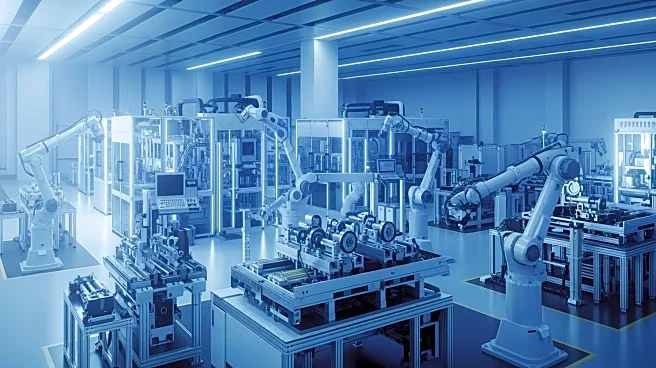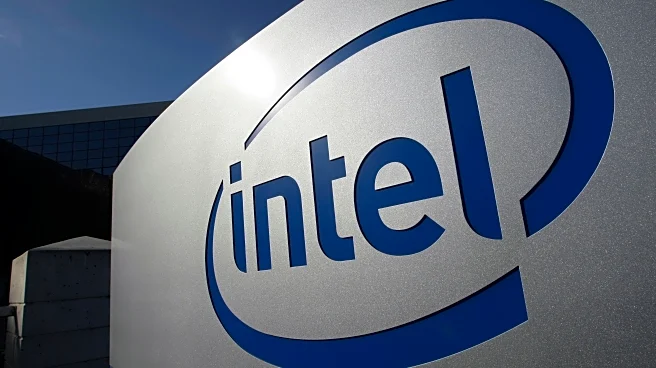What's Happening?
Intel has reported a significant improvement in its third-quarter earnings, surpassing analyst expectations with a revenue of $13.7 billion, which is $560 million above estimates. The company's adjusted earnings per share reached $0.23, a substantial
increase from the anticipated $0.01. This performance marks a notable turnaround for Intel, which has been working to recover from previous financial setbacks. The company's balance sheet has been strengthened by investments from the U.S. government, Softbank, and Nvidia, alongside a $3.3 billion gain from selling a majority stake in Altera. Intel's PC business is also showing signs of recovery, with a projected total addressable market of 290 million units for the year, driven by the Windows 11 refresh and new product lines. However, Intel faces challenges with supply constraints in its older manufacturing processes, which may impact its ability to meet demand in the coming quarter.
Why It's Important?
Intel's strong earnings report is a positive signal for the U.S. semiconductor industry, highlighting the potential for recovery and growth in a sector that has faced significant challenges. The company's improved financial position, bolstered by strategic investments, provides it with the resources to continue investing in its foundry business and new technologies. This development is crucial as Intel remains the only U.S.-based advanced logic chip manufacturer, a strategic asset in the global tech landscape. The recovery in the PC market, driven by new product launches and operating system updates, suggests a potential rebound in consumer demand, which could benefit other tech companies and suppliers. However, Intel's ongoing supply constraints highlight the need for continued investment in manufacturing capacity to sustain growth.
What's Next?
Intel plans to prioritize its data center business in the fourth quarter, focusing on increasing the output of server CPUs, which are more profitable than entry-level PC chips. This strategic shift may lead to a decline in sales for its client computing segment but is expected to drive growth in the data center segment. As Intel continues to ramp up its newer manufacturing processes, it aims to address current supply constraints and meet the growing demand for its products. The company's long-term success will depend on securing major customer commitments for its foundry business and improving yields for its Intel 18A process. Investors and industry stakeholders will be closely watching Intel's ability to execute its turnaround strategy and capitalize on emerging market opportunities.














